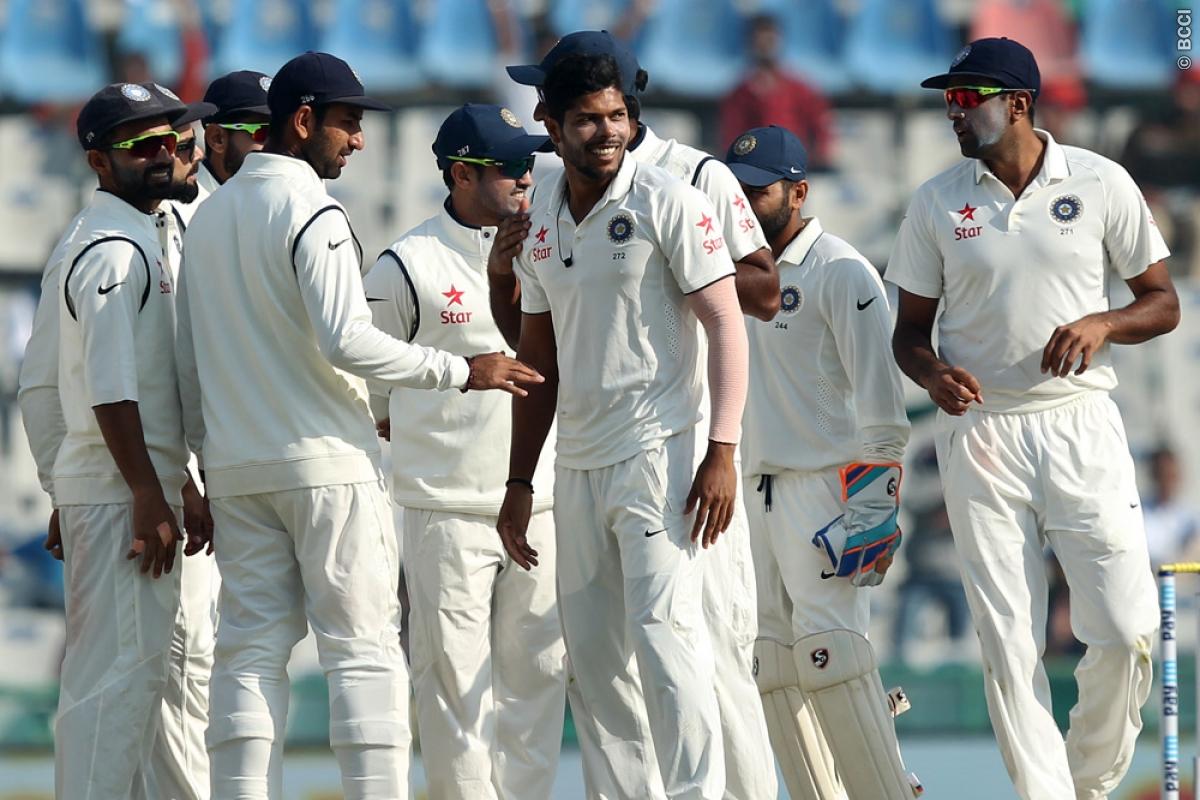Five talking points from the India-England series

© BCCI
As the dust finally settles on the first Test series between India and England on Indian soil in almost four years, we review the encounter produced raised many questions over the course of five Test matches--including England's situation, Kohli-Root rivalry and also the impact of DRS.
After five breathless Test matches, four emphatic results and a mountain of runs, wickets and records, the series between India and England has reached a conclusion. The year 2016 has been a busy one for both sides, and with some three weeks to go before the action resumes with an ODI series on 15 January, it is the right time to snap this momentous series into focus.
As the dust settles on the Test matches, several points of discussion have emerged featuring an eclectic cast of characters, a range of statistics, match-winning performances, video technology and, perhaps most pertinently now that the Tests for both sides for the year are over, questions about what lies ahead and what possible direction the teams may go in. Here are five things we learned – and sometimes didn’t – from the India-England Test series.
#1 – Contrasting opening predicaments
For England, the series has produced a couple of viable alternatives at the top of the order, and in that respect, this visit to India has not been
With an injury to his hand, Hameed was replaced by the tall left-hander Keaton Jennings, a leading performer in county cricket. The latter scored a hundred, and although a first-ball duck in the next innings tarnished that effort to some extent, England

 © Getty
© GettyAs for India, the series may just have revealed a greater dilemma over the two occupants of the openers’ slots than before. Surely, Parthiv Patel is not imagined as the long-term solution in that role, but various possible combinations of KL Rahul, Murali Vijay and perhaps even the currently out-of-frame Shikhar Dhawan and Gautam Gambhir still exist. The advantage with Lokesh Rahul, who narrowly missed out on a double hundred in the final Test, is that he has experience of batting elsewhere in the order.
#2 – India's expanded middle-order
Settled sides are always a good thing to have in

 © Getty
© GettyThe choice at the top of the order means there is the alternative of moving Rahul lower down the order, while Nair’s record-breaking triple hundred in Chennai means dropping him at this stage would not be advisable. This is before mentioning Test regular Ajinkya Rahane and also the deposed Rohit Sharma. Ravichandran Ashwin (who scored over 300 runs in this series) and Yadav (who notched up his maiden Test hundred in Mumbai) have also made claims independent of their bowling and there is merit in an occasional promotion up the order – as happened with Ashwin in this series and against the West Indies earlier this year.
#3 – Kohli and Root outdo themselves
Heading into this series, Virat Kohli and Joe Root

 © BCCI
© BCCIThe Indian Test captain is reaching new heights all the time; the innings at Mumbai was his third double hundred of the year and his career-best score of 235. He has been applying himself at the crease for longer and longer periods of time, and that perseverance is producing big knocks. Prior to the series, Root had 478 runs from 12 innings in Asia and 986 runs (versus 1385 runs in 2015) in the calendar year. He has scored 491 runs from his ten innings in this series – all of them from the number three spot – and his run-scoring has been generally very solid – one century and four fifties in the five Tests.
While Kohli has seemingly mastered the art of playing big innings, Root’s accumulation of runs in more moderate doses has been just as impressive. This series brought him very close – just four runs short
#4– England not in crisis, but issues remain
Certainly, a 4-0 whitewash does not look good for England at all. Half of their total Test defeats this year (they have played 17 games) have come in this series, Cook has now lost the most games of any English captain, the visitors have scored heavily and yet been crushed by the home side more than once. England

 © BCCI
© BCCIBut it was not all doom and gloom. No doubt it was a bad defeat for England, but even leaving aside the development of individual players like Root, Jennings or Hameed, the visitors did manage first-innings totals of 400 or greater on three occasions. This suggests that they had skill and gumption greater than the previous visitors New Zealand. Only England themselves (2012) and South Africa (2010; one Test) have won in India this decade, suggesting that the modern England really are a good side who were simply outdone by their opponents –something Alastair Cook alluded to after the series.
#5 - DRS on the front foot
And on a more general cricketing note, it was encouraging to see the long-overdue debut of the Decision Review System in a Test series in India, as one of the sport’s powerhouses finally gave its endorsement to one of cricket’s biggest modern innovations. The use of a review is a skill in itself, a decision marked by clever judgment and intuition as well as trust in one’s teammates.

 © BCCI
© BCCIAlready, the technology has been in the thick of things. One can point to various examples of its success – such as the exoneration of Cheteshwar Pujara en route to his hundred in Rajkot. Sometimes, of its doubts – Ben Stokes’ bat-on-ground dismissal in Mumbai. But if the use of this device is to continue, this series could only have helped the Indians become more efficient in their referrals to the man upstairs. With assignments against Bangladesh and Australia in 2017 upcoming, as they say in England--every little helps.
